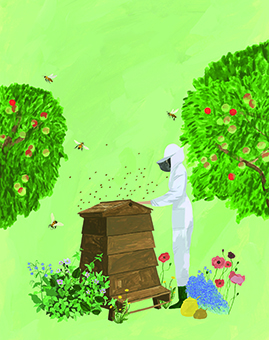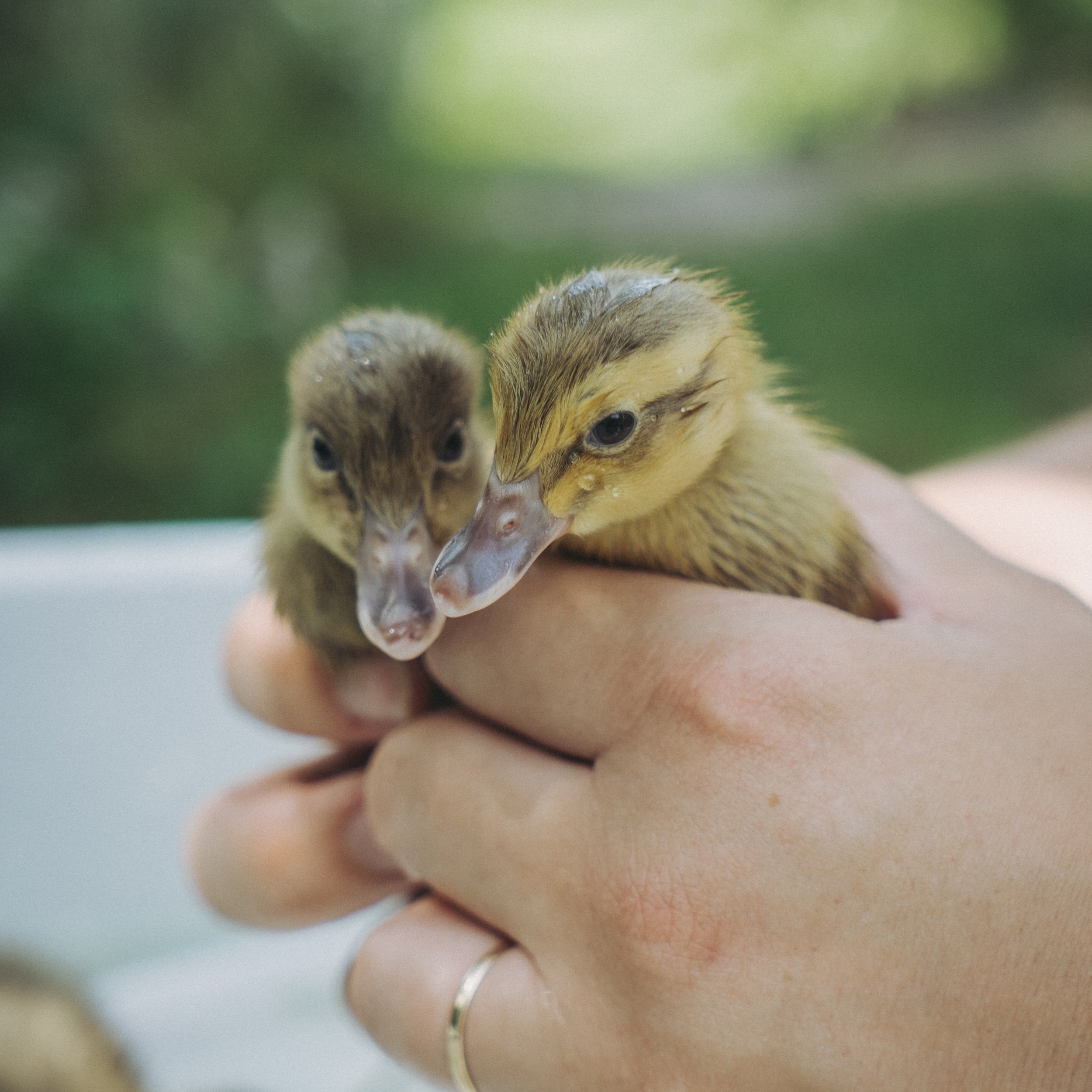Because you never know when you may be called upon to perform a skilled piece of animal husbandry
Just in case you ever find yourself, clippers in hand, being asked to give a sheep a short back and sides, here’s how to do it step by step. The Simple Things takes no responsibility for any mis-sheared sheep or injuries that befall you while shearing a sheep while following our instructions. Sorry.
1. First, catch your sheep
Approach the animal slowly and calmly but with a determined look in your eye that lets the sheep know who’s boss. We’ll assume you have chosen a dry day (you can’t shear wet wool) and that the sheep has fasted for a day, too; those things aren’t your concern. Herd the sheep to your shearing site with your arms and legs, then gently tip the sheep onto her back, holding her right leg in your right hand and the woolly top of the brisket with your left hand. She should have all four feet in the air, belly exposed, head turned to one side and be leaning back into your body with your legs supporting her shoulders. We never said this was a dignified process.
2. Start shearing
Begin with the belly piece as this is dirtiest and worth the least money. You’re aiming to get the whole fleece off in one piece with the belly piece wrapped in the middle but it’s a bit like peeling an orange in one go - it takes practice - so just do your best. If you’re right handed, hold the shears in your right hand and use your left to pull the skin taut to avoid nicks. Start each blow (that’s the technical term for each ‘go’ with the shears) at the brisket (neck) end, and shear down to the flank (back legs). Take a blow down the left side, then the right side, then do the middle - like you do with painting your nails.
3. Do the delicate bits
Shear around the crotch and down the inside of each hind leg by leaning right over the sheep, with her head still resting on your leg. Be very careful of her teats - cover them with your hand as you shear as it is possible to cut them right off and that won’t be a relaxing experience for you or the sheep.
4. Mind the hind
Turn the sheep onto its right side and shear the outside of the left hind leg. Four blows should take you from the foot up to near the back bone.
5. Tails you win
If the sheep has a tail, do it at this stage, shearing from tip to top and finishing with a short blow up the back at the base of the tail.
6. More familiar ground: chest, neck and chin
Turn her side on to you, your right foot in between her hind legs and the left behind her back supporting her bottom. We hope you wore some old shoes for this… Hold her head under the chin with her head facing up at you. Try not to let her sad look make you feel awkward. Take the clippers from the brisket to just below the chin, ‘unzipping’ the fleece, and then up the face in short strokes, ending at the bottom of the ear and eye.
7. Show a bit of leg
Again, shift her slightly onto her right side and lean over her to shear up her left leg and onto the left shoulder. Do inside the left foreleg while you’re here.
8. The big mow
You’re on the home strait now and are about to shear the back. Lie her on her right side across your shin with your right foot placed between her back legs and your left foot under her shoulder. Starting at the tail, take long, steady blows up the back down her left side, beginning at the outside edge and working across to just past the spine.
9. Home and hosed
Shift the sheep onto her left side and shear the rest of the neck and shoulders, then the right foreleg, from the shoulder, downwards. Finally, shear the wool down her left back and side, from the neck towards her rear end, finishing with the right hind leg. Ta da! You’re done!
10. You should now skirt (clean) and roll the fleece ready for sale, but we think you’ve done enough. Give your hands a thorough wash, sit down for a well-deserved cuppa and reflect upon the fact that a pro shearer can do all that in under two minutes. We’re more at home with a knit one, purl one sort of endeavour if we’re honest.
We were inspired to find out more about sheep-shearing after we read the Know A Thing or Two feature on wool in our November issue.
Buy this month's The Simple Things - buy, download or subscribe
More from our November issue…





























